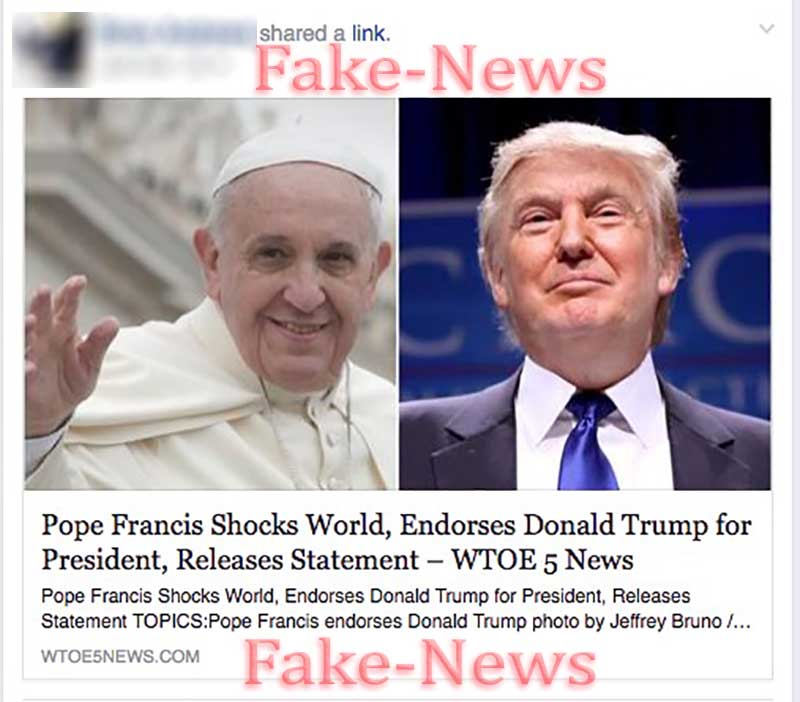Jesus: Everyone on the side of truth listens to me.
Pontius Pilate: What is truth?
Since the election of Donald Trump, debate has raged about whether the flood of ‘fake news’ on the web swung the election to him. Leaving to one side Trumps’ own contribution to a ‘post truth’ world – and dishonesty is hardly a new trait in politics – the ‘something-must-be-done brigade’ wants to know what Google and Facebook in particular are doing to prevent ‘fake news’ trending in their news feeds and results. But howare PROs going to respond given its importance to many in our industry?
Facebook, as the most popular platform for people gathering news on the web, is wary of being the arbiter of truth. It knows all too well that once you start injecting human judgment into editorial decisions, accusations of bias are sure to follow. Facebook used to have a team of editors who were tasked with curating news for its ‘trending news’ box. Then they were accused of suppressing right-wing views.
Facebook’s response was to replace humans with software. But the algorithm isn’t sophisticated enough to identify what is or is not a fake story. And those fake stories started trending (ironically mainly in Trump’s favour).
Google and Facebook have announced that they will remove advertising from fake news websites but they have yet to take any other steps that might flag when news has been provided by credible, established media organisations (whatever they are) as opposed to more obviously partisan writers (if indeed that would be possible or desirable).
There are three interconnected issues here for PROs. First, increasing numbers of people choose to get their news curated through the likes of Google, Twitter and especially Facebook. People are shaping their media consumption around their own opinions and prejudices and social media aggregates and amplifies this. An echo chamber is developing as individuals are presented with more of what the computer algorithms perceive they like, thus filtering out differing viewpoints or indeed, whole swathes of news.
Second, while we don’t know how big a problem is fake news, whether it results from deliberate deception (for instance, the story that the Pope endorsed Trump) or sloppy or partisan journalism, its effect is to sow doubt in the public’s mind about the veracity of news and the motives of news-gatherers (as recently asked of me: why doesn’t the BBC report how the USA is funding ISIS?!). For organisations that wish to engage digitally or otherwise with the public, this creates a trickier external operating environment for the delivery of information and messages.
And thirdly, in a ‘post truth’ age, experts are no longer respected and ‘facts’ no longer provide us with a reality that we can all agree upon. As Michael Gove said during the EU referendum, “people in this country have had enough of experts”.
This is not just about conspiracy theorists distorting the lens through which we analyses facts. PROs stand accused of seeking the eye catching headline (have wildlife populations really declined by 58% since 1970?) just as much as newspapers (are High Court Judges really the ‘Enemies of the People’ as claimed by the Daily Mail?). The public suspects that the PR people can always find an expert or create a survey result that endorses the corporate point of view.
To be honest, we have long lived in a ‘post-truth’ world. People have always responded less to rational argument and more to emotional entreaties. Social media has merely allowed people to discover that their gut feelings are shared by millions of others.
Brexit, Trump and the rest are just a wake-up call to communicators that they need to change tack. Facts and data are helpful but to persuade people they need to be presented in such a way as to touch people’s emotional lives.

